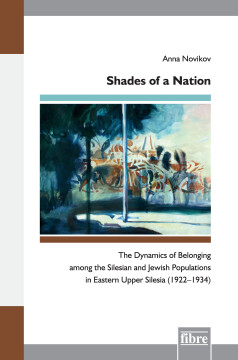Shades of a Nation

BOOK
Cite BOOK
Style
Format
Shades of a Nation
The Dynamics of Belonging among the Silesian and Jewish Populations in Eastern Upper Silesia (1922–1934)
Einzelveröffentlichungen des Deutschen Historischen Instituts Warschau, Vol. 34
(2015)
Additional Information
Book Details
Abstract
Das Buch untersucht die Nationalisierung einer lokalen Bevölkerung an einer mitteleuropäischen Grenze in der Zwischenkriegszeit unter Einbeziehung eines weiten, vergleichenden Kontextes und vor dem Hintergrund der internationalen politischen und diplomatischen Beziehungen. Im Fokus steht ein Zeitraum von dreizehn Jahren zwischen 1921 (Volksabstimmung in Oberschlesien) und 1934 (Unterzeichnung des deutsch-polnischen Nichtangriffspaktes). Nach der Volksabstimmung wurde Oberschlesien zwischen Deutschland und Polen geteilt. Der Polen zugesprochene Teil durchlebte einen intensiven Nationalisierungsprozess, der »Polonisierung« genannt wurde. Die Studie konzentriert sich auf die Stadt Kattowitz/Katowice, ein politisiertes Gebiet mit internationaler Bedeutung, das nach der Grenzfestlegung zur Hauptstadt der neuen polnischen Wojewodschaft Schlesien wurde. Das Buch analysiert die Dynamik der Zugehörigkeit und der »Einbindung« zweier Volksgruppen während dieses Prozesses: der Schlesier und der Juden in Ostoberschlesien, deren eigene »Mikrogeschichte« in die »Makrogeschichte« Mitteleuropas zwischen den Weltkriegen eingebettet wird. Die Arbeit trägt zum Verständnis der Beziehungen zwischen den Minderheiten und der herrschenden Mehrheit im nationalen Diskurs des 20. Jahrhunderts bei und unterstützt die Suche nach den im Zeitraum zwischen den Weltkriegen liegenden Ursachen von Konflikten, die bis heute auftreten.This book both narrates and examines the story of the nationalization of a local population in an interwar Central European border area using a wide and comparative context that relies on the international political and diplomatic background of the time. It concentrates on a time period of thirteen years, from 1921 (the year of the plebiscite in Upper Silesia) to 1934 (when Poland and Germany signed the non-aggression pact). After the plebiscite, the area of Upper Silesia was divided between Germany and Poland, and the part which was shifted to Poland experienced an intensive process of nationalization or what will be called »Polonization«. The study focuses on the city Kattowitz/Katowice, a politicized area of international importance and which after the shifting of the border became the capital of the new Polish Silesian Voivodeship. The book analyzes the dynamics of »belonging« and »affiliation« as experienced during this process by two non-national groups in the population: the Silesian and the Jewish in the Eastern Upper Silesian region, with the process placing these two »micro« histories within the »macro« history of interwar Central Europe. This work contributes to an understanding of the relationships between the minorities and the ruling majorities in the national discourse of the twentieth century and assists in tracing the interwar sources of the conflicts that appear yet today.
